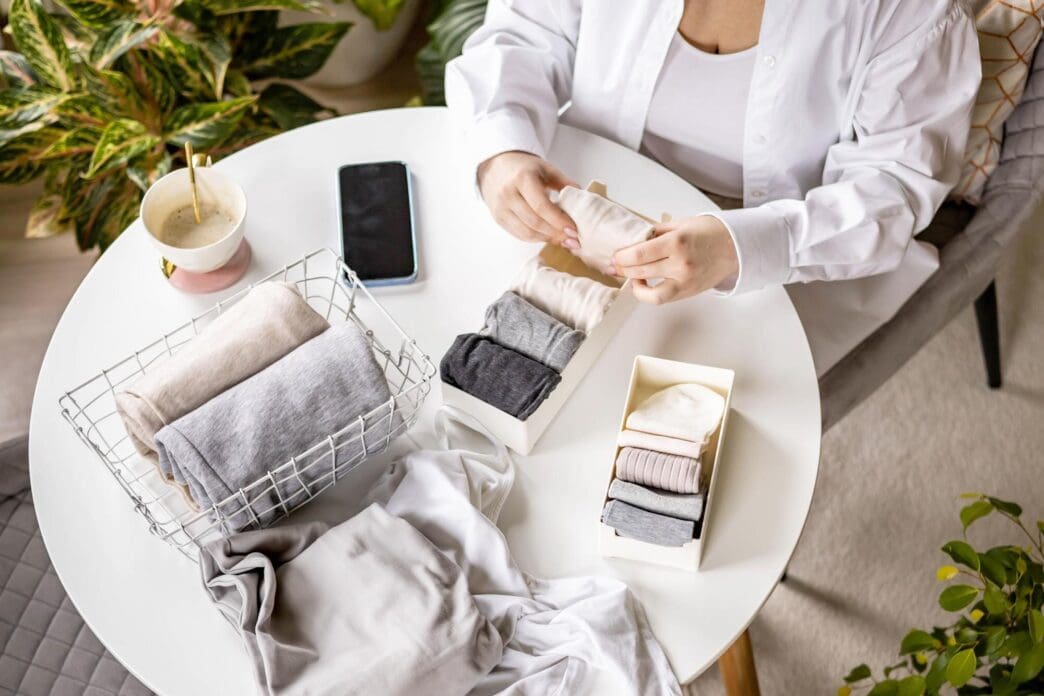A Quick Takeaway
The Story Behind the Trend
How to Make It Work for You
The Community View
Tired of clutter creeping back into your home just when you thought you’d finally tamed it? The “One-In, One-Out” rule is a simple yet profoundly effective strategy for maintaining a clutter-free living space, designed for anyone who struggles with accumulation. This powerful principle dictates that for every new item you bring into your home, one similar item must leave, creating a sustainable system that prevents overwhelm and fosters mindful consumption. By consistently applying this rule, you can transform your environment, reduce stress, and cultivate a more intentional lifestyle without the need for constant, arduous decluttering marathons.
What is the One-In, One-Out Rule?
At its core, the One-In, One-Out rule is remarkably straightforward: when a new item enters your home, an existing, comparable item must be removed. This isn’t about simply discarding things; it’s about making a conscious exchange. For instance, if you purchase a new pair of shoes, you commit to donating or selling an old pair. If you buy a new book, an old one finds a new home.
This principle applies across virtually all categories of household items, from clothing and kitchen gadgets to books, decor, and even digital files. It serves as a continuous, gentle form of decluttering, preventing the slow but steady accumulation that often leads to overwhelming messes. The rule encourages a constant state of evaluation, ensuring that your belongings remain purposeful and valued.
The Psychology Behind Its Effectiveness
The One-In, One-Out rule isn’t just a tidying trick; it leverages several psychological principles that make it incredibly effective for long-term decluttering. Firstly, it acts as a gatekeeper, forcing you to confront the reality of your existing possessions before adding more. This immediately curtails impulse purchases and encourages more thoughtful buying decisions.
Secondly, it transforms decluttering from a dreaded, monumental task into a series of small, manageable decisions. Instead of facing a mountain of items to sort through, you’re making one simple exchange at a time. This reduces decision fatigue and makes the process far less daunting, fostering a sense of control and accomplishment.
Finally, by regularly parting with items, you gradually loosen emotional attachments to material possessions. This detachment is crucial for maintaining a clutter-free home, as it helps you distinguish between items you truly need or love and those that are simply taking up space.
Implementing the Rule: Getting Started
Integrating the One-In, One-Out rule into your life is easier than you might think, and it doesn’t require an initial purge. Start by choosing one specific category where you feel comfortable making exchanges. Clothing is often a great starting point due to its frequent turnover.
When you bring a new item into your home, immediately identify its counterpart. Don’t put off the decision; make it part of the acquisition process. Have a designated “departure zone” – a box or bag in your closet or garage – where items destined for donation, sale, or recycling can be placed immediately. This ensures that items leave your home promptly, preventing them from lingering.
Tips for Successful Implementation
- Be Specific: Try to match items as closely as possible. A new T-shirt means an old T-shirt goes, not a pair of socks.
- Consider “Holding Zones”: If you’re unsure about an item, place it in a temporary “holding zone” for a set period (e.g., 30 days). If you don’t use it, it goes.
- Handle Gifts Thoughtfully: While the rule primarily applies to items you acquire, consider applying it to gifts if they duplicate something you already own or don’t serve a purpose.
- Exceptions for Consumables: Items that are used up, like food or toiletries, generally don’t fall under this rule, unless you’re addressing pantry overflow.
Beyond a Tidy Space: The Broader Benefits
The advantages of adopting the One-In, One-Out rule extend far beyond simply having a tidy home. A clutter-free environment significantly reduces mental load, leading to decreased stress and anxiety. When your surroundings are organized, your mind feels more organized, fostering greater clarity and focus.
This practice also promotes conscious consumerism. By constantly evaluating your possessions, you become more intentional about what you bring into your life, often leading to fewer impulse purchases and potential financial savings. Furthermore, by donating or selling items, you contribute to a more sustainable lifestyle, reducing waste and giving items a second life.
Ultimately, a home managed by the One-In, One-Out rule becomes a sanctuary rather than a storage unit. It frees up time that would otherwise be spent searching for lost items or constantly tidying up. This newfound time and mental space can then be redirected towards activities that truly enrich your life and support your overall well-being.
Making it a Sustainable Lifestyle
The true power of the One-In, One-Out rule lies in its ability to become a sustainable habit. It shifts your mindset from periodic purges to ongoing maintenance, integrating decluttering seamlessly into your daily life. It’s not about perfection but about consistent, small actions that compound over time.
By embracing this simple yet profound approach, you empower yourself to take continuous control over your living environment. You move from reacting to clutter to proactively preventing it, creating a home that supports your well-being and reflects your values. This isn’t just about decluttering; it’s about cultivating a more intentional, peaceful, and abundant life.







